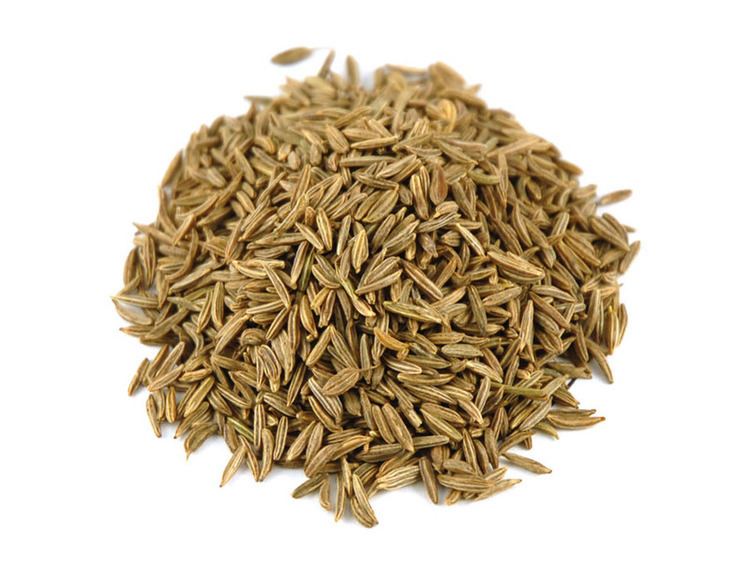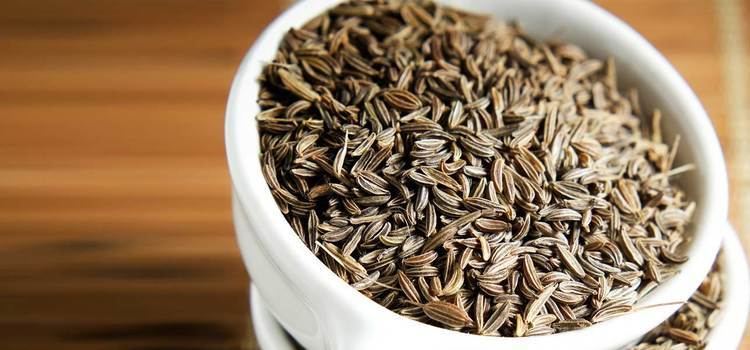Rank Species | Genus Carum Higher classification Carum | |
Similar Cumin, Fennel, Coriander, Marjoram, Fennel flower | ||
Caraway, also known as meridian fennel, and Persian cumin, (Carum carvi) is a biennial plant in the family Apiaceae, native to western Asia, Europe, and North Africa.
Contents

The plant is similar in appearance to other members of the carrot family, with finely divided, feathery leaves with thread-like divisions, growing on 20–30 cm (7.9–11.8 in) stems. The main flower stem is 40–60 cm (16–24 in) tall, with small white or pink flowers in umbels. Caraway fruits (erroneously called seeds) are crescent-shaped achenes, around 2 mm (0.08 in) long, with five pale ridges.

Names and history
The etymology of caraway is complex and poorly understood.

Caraway has been called by many names in different regions, with names deriving from the Latin cuminum (cumin), the Greek karon (again, cumin), which was adapted into Latin as carum (now meaning caraway), and the Sanskrit karavi, sometimes translated as "caraway", but other times understood to mean "fennel".

English use of the term caraway dates back to at least 1440, and is considered by Skeat to be of Arabic origin, though Katzer believes the Arabic al-karawya (cf. Spanish alcaravea) to be derived from the Latin carum.
Caraway is called zīreh (زیره) in Persian.
Uses

The fruits, usually used whole, have a pungent, anise-like flavor and aroma that comes from essential oils, mostly carvone, limonene, and anethole. Caraway is used as a spice in breads, especially rye bread.

Caraway is also used in desserts, liquors, casseroles, and other foods. It is also found in European cuisine. For example, it is used in caraway seed cake, and it is frequently added to sauerkraut. The roots may be cooked as a vegetable like parsnips or carrots. Additionally, the leaves are sometimes consumed as herbs, either raw, dried, or cooked, similar to parsley.
In Serbia, caraway is commonly sprinkled over home-made salty scones (pogačice s kimom). It is also used to add flavor to cheeses such as bondost, pultost, havarti and Tilsit cheese. Scandinavian Akvavit, including Icelandic Brennivin, and several liqueurs are made with caraway.

In Middle Eastern cuisine, caraway pudding is a popular dessert during Ramadan. Caraway is also added to flavor harissa, a Tunisian chili pepper paste. It is typically made and served in the Levant area in winter and on the occasion of having a new baby. In Aleppian, Syrian cuisine it is used to make the sweet scones named keleacha.
Caraway fruit oil is also used as a fragrance component in soaps, lotions, and perfumes. Caraway is also used as a breath freshener, and it has a long tradition of use in folk medicine.
Cultivation
Caraway is distributed throughout practically all of Europe except the Mediterranean region; it is widely established as a cultivated plant. All other European species of Carum generally have smaller fruits; some grow on rocks in the mountains, chiefly in the Balkans, Italian Alps and Apennines. However the only one that is cultivated is Carum Carvi, its fruits being used in many ways in cooking and its essential oils in the preparation of certain medicines and liqueurs.
The plant prefers warm, sunny locations and well-drained soil rich in organic matter. In warmer regions, it is planted in the winter as an annual. In temperate climates, it is planted as a summer annual or biennial. However, a polyploid variant (with four haploid sets=4n) of this plant was found to be perennial.
Finland supplies about 28% (2011) of the world's caraway production. Caraway cultivation is well suited to the Finnish climate and latitudes, which ensure long hours of sunlight in the summer. This results in fruits that contain higher levels of essential oils than those produced in other main growing areas which include Canada, the Netherlands, Egypt, and central Europe.
